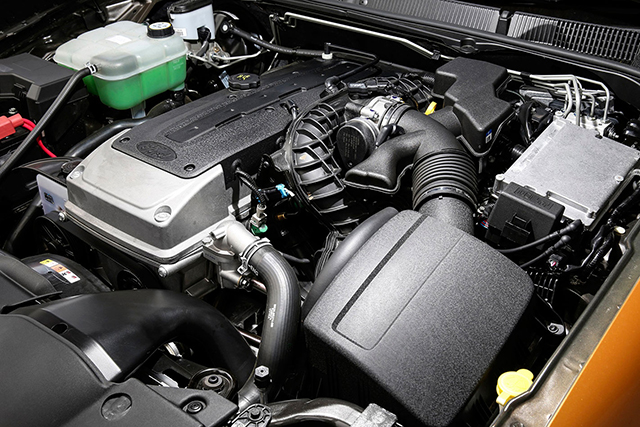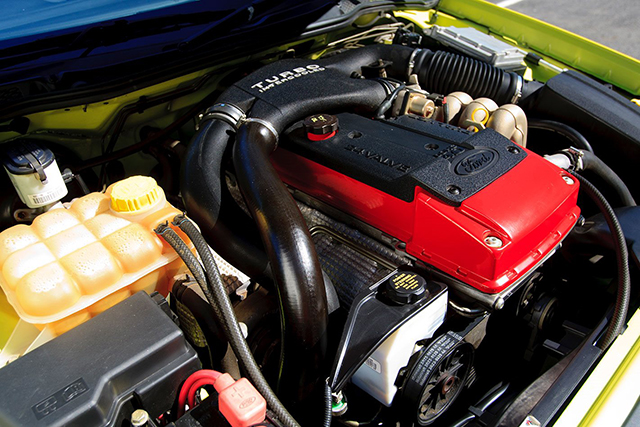Grandpa’s axe. It’s a term usually employed to describe something that’s been around for decades and is almost unbreakable. And when it does break it’s repaired in a low tech way. Simplicity rules, you see.
Ford’s venerable straight six engine was Australia’s automotive equivalent of that axe from grandpa’s shed. Covering a range of capacities including the famous 4.1L or 250cid, its no nonsense, take what it was given, unburstable design, has it as a favourite in Australia’s car loving hearts.
The straight six that Australia saw was born in America. Available in various capacities there, including a 200cid six that was seen in the original US Mustang, Ford’s Australian arm unveiled the 250cid straight six in 1970. Its basic design was strong, simple, just like grandpa’s axe. A 2V suffix was given to the engine, denoting that the carbie had two venturi and would breathe deeper than the single carbied versions. Available from the XY through to XB Falcon, it was good for 116kW and 325Nm, a hefty increase over the standard 200cid’s 96kW/257Nm delivery.
Barra itself is a contraction of Barramundi. That’s not just a tenacious fish, it was the code name for the engine during development. It was applied not only to the straight six but also to the three valve 5.4L V8 version. The six was built from 2002 and was found in various Ford products such as the Falcon and Territory until Ford Australia ceased manufacturing in 2016.
The V8s, in Barra then Boss and Coyote form, were there until the FG-X model of the Falcon and derivatives wrapped in 2016. The Barra V8 ceased with the BF Fairlane which was available from 2005 to 2007, and became the last Fairlane model produced here.

The straight six was engineered into several different versions including a LPG fed engine. But many “revheads” would say the six’s finest hour was when it was built with a turbocharger and bolted into the XR6, F6, and suchlike. With “normal” engines pumping out an original 182kW, 190kW, and 195kW, with 380Nm, 383Nm, and 391Nm, the turbo took the power and torque to world class levels.
There was an initial offering, of 240kW and 450Nm, with that twist available from 2000 to 4500 rpm. Along came the 245kW and 480Nm version before the Barra 270T, with Garrett GT3576R turbo, and Barra 310T showed what clever Australian engineering could deliver.
Found in the BA, the BF, and then the FG, the big six may have actually undersold its capabilities. Rumours abound that in order to continue sales of the V8, the power and torque figures were deliberately quoted as being less than what they actually produced, with 360kW and 700Nm being whispered as the true figures.
Ford’s best six came in the form of the Barra 325T. This, sadly, was a deliberately limited run and sold in the limited edition FG-X XR6 Sprint. With ten pre-production vehicles, five hundred for Australia, and just fifty for New Zealand, it was a special engine in a special car. Power was quoted as 325kW @ 6000rpm, and 576Nm at a driver friendly 2750rpm. The engines also had an overboost feature for the turbo, which allowed an extra ten percent of boost to be added for up to ten seconds.
Combined with larger injectors at 82mm, a fifty percent bigger intercooler, and a carbon fibre air intake (a first for Ford Australia) with better airflow, Ford Australia said the overboost would deliver 370kW and 650Nm of torque.
Although the V8s sold well and were amongst the first in the world to feature what Ford called the VCT Modular design, they simply didn’t grab the attention as well as the six. Power outputs for the three valve V8s were reflected in the names, being Barra 220 (472Nm) and Barra 230 500Nm).
The grandpa’s axe straight six’s heritage and strength have it in the part of automotive history marked “To Be Revered Because Of Its Legendary Status.” Long live the Barra.
